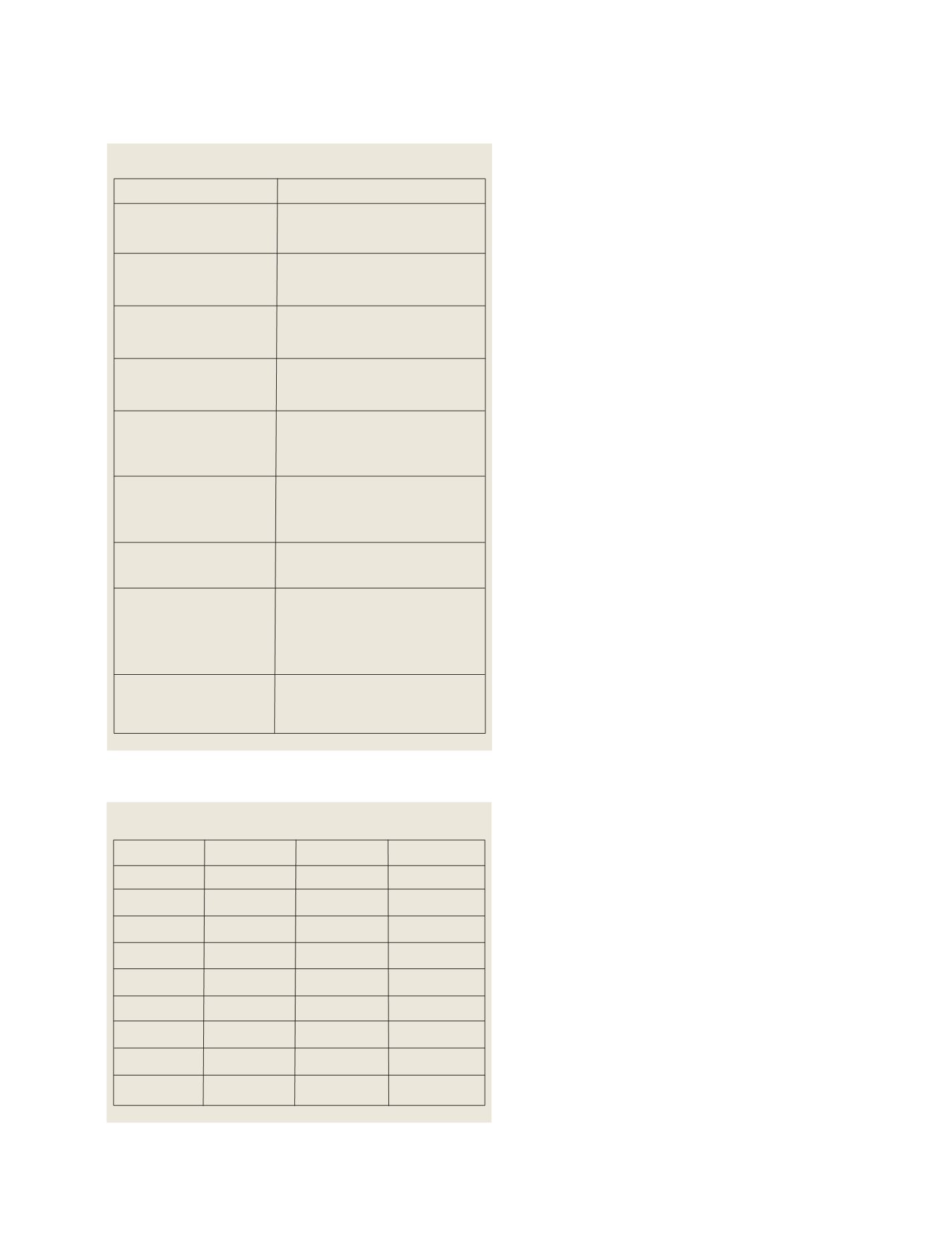

Societal benefit area
Reduction of natural hazards
(floods, drought, impacts)
Human health
(disease vectors, drinking water)
Energy management
(hydro, alternate, fossil fuel)
Climate
(trends, prediction)
Water management
(resource inventory, hydrologic
prediction, water supply)
Weather forecasting
(initialization, severe weather,
long-term forecasts)
Ecosystems
(ecosystem integrity)
Agriculture
(crop monitoring, irrigation
scheduling, livestock)
Biodiversity
(habitat)
[
] 222
Global Earth Observation System of Systems (GEOSS)
over the next decade. This programme, which is
described elsewhere in this publication, addresses
nine societal benefit areas and has core committees
dealing with architecture and data management,
science and technology, capacity building and user
interfaces.
Review of existing water cycle information
systems
To meet the requirements of the GEO societal benefit
areas, water cycle observations must provide a basis
for stable information systems, long-term statistics and
resolving scale issues. They must also be easily acces-
sible, and available as soon after the observation are
taken as possible. When combined, localized high
resolution in situ data and the coarse global data avail-
able from satellites can meet the requirements of a
wide range of users. The status of measurements of
different water cycle variables differs among variables
and applications. A limited set of requirements was
compiled from interactions with users.
5
The status of
these observations is desrcibed below.
Precipitation
– At present, precipitation is observed
with a wide variety of systems including precipitation
gauges, surface-based rain radars, observations of
passive visible, infrared and microwave radiances and
active sensing from satellites. Integrated data products
such as the Global Precipitation Climatology Project
(GPCP) products combine data in different ways to
meet the resolution and accuracy requirements of
users.
6
Surface water store and stream discharge
– Although
streamflow measurements are taken by nearly every
country, due to data-exchange policies and the net loss
of hydrometric stations over the past two decades,
7
the
capability of monitoring water resources has dimin-
ished. The Hydrological Applications and Run-Off
Network (HARON), a joint GEO/World Meteorological
Organization (WMO) project, will accelerate the devel-
opment of integrated runoff data products that
combine in situ and satellite observations. Snow is
another example of important surface water reservoir
at higher latitudes. Observations of snow cover for
climate purposes are made primarily from polar orbit-
ing and geostationary satellites, while passive
microwave measurements combined with in situ
measurements (e.g. snow pillow, snow rulers) provide
a basis for estimates of water equivalent.
Soil moisture
– Networks of periodic soil moisture
measurements are maintained by some countries, but
international coordination and standards are lacking.
The beneficial use of remote sensing for soil moisture
has been convincingly demonstrated in terrain
covered by thin or moderately dense vegetation (e.g.
typical crops) using passive microwave emission
radiometry. ESA is currently implementing the SMOS
mission for the measurement of soil moisture. These
space-based data sources combined with data assimi-
Water cycle information needs by societal benefit area
Water cycle information needs
Floods: precipitation, runoff
Drought: soil moisture, precipitation
Impacts: groundwater, streamflow
Disease vectors: surface water area,
precipitation. Drinking water: water
quality, groundwater, streamflow
Hydro: streamflow, precipitation. Alternate:
clouds, surface water storage
Fossil fuel: streamflow, surface water store
Trends: clouds, precipitation, streamflow
Prediction: precipitation, soil, moisture,
sea surface temperature
Resource inventory: surface water store,
groundwater. Hydrologic prediction:
precipitation, streamflow. Water supply:
streamflow, groundwater
Initialization: clouds, precipitation, soil
moisture
Severe Weather: precipitation
Long-term forecasts: soil moisture
Ecosystem integrity: Water quality,
streamflow, surface water store
Crop monitoring: precipitation, soil
moisture. Irrigation scheduling:
precipitation, soil moisture, surface
water storage. Livestock: surface water
store, water quality
Habitat: water quality, surface water
store
Space, time and accuracy requirements for water cycle variables
Variable
Precipitation
Soil moisture
Streamflow
Lake levels
Snow cover
Clouds
Water vapour
Surface fluxes
Short wave
Spatial res.
4 – 5 km
10 – 100 km
1 – 10 km
(forbasins)
1 – 10 km
1 – 10 km
100 m – 10 km
10 – 100 km
10 – 100 km
10 – 100 km
Temp. res.
3 hrs
1 – 10 days
1 – 10 days
1 wk – 1 mo
24 hrs
3 hrs
3 hrs
3 hrs
3 hrs
Accuracy
0.1 mm/h
5%
5%
5%
10%
5%
5%
5%
5 W/m
2
Source: adapted from IGOS-P, 2004
Source: R. Lawford
S
OCIETAL
B
ENEFIT
A
REAS
– W
ATER
















